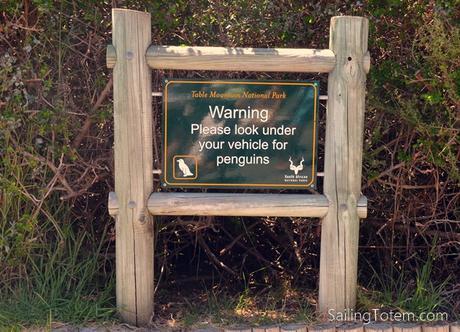
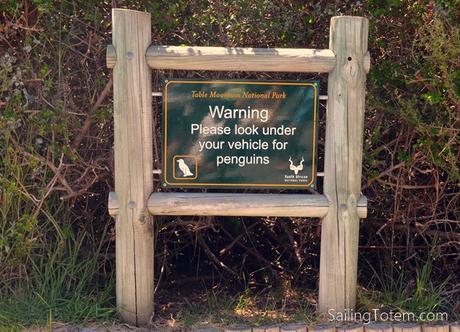
It started during our first road trip: picking up on sayings, food, treats and more that stood out to us as uniquely South African. Our expat family in Jo’burg helped further our education: a host of uniquely South African sounds, signs, tastes, and more.
Animals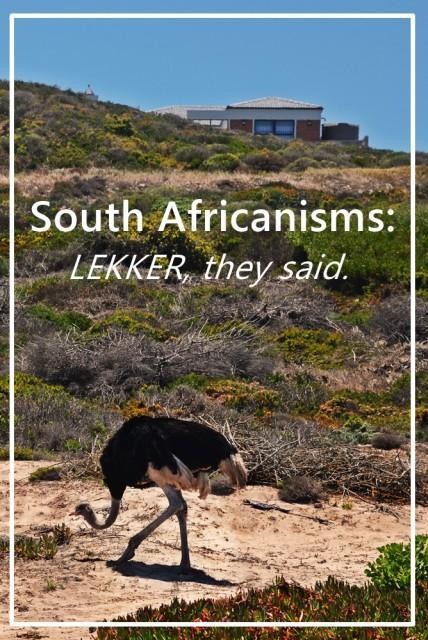

If there’s one thing everyone knows about South Africa before arrival, it’s the iconic wildlife. We were blown away by what we saw at game parks during our first weeks: the sightings had a storybook quality. But it’s not just game parks! In the residential neighborhood of Yzerfontein, north of Cape Town, ostrich wander between the houses. On our first inland jaunt, we saw a group of zebra drifting through a field. During our road trip across the country, meerkats stood at attention on the side of the highway, and a group bachelor kudu held their spiraled horns for us to admire. That’s just scratching the surface! Perhaps it’s why the road signs, like the penguin warning above, have charm.
Language
Most South Africans speak English, but it’s not the American English we know. Some of these turns of phrase are fun just for now; others will stay with us for the long term. Anyone planning to visit South Africa, here’s a preview for a handthat make us smile!
Shame. It’s a crackup how commonly this word, which we don’t use often in American English, crops up in SA. Missed the weather window? Shame. Feeling low? Shame. It can be loaded with all kind of delicious sarcasm, and may be intended as a positive comment as well. “What a cute dress! Shame.” Yes, really.
Lekker. Afrikaans, but with much broader use than just “delicious” (the meaning retained in origin Dutch). That hike was lekker. How’s your day been? Lekker. This biltong is lekker! And yes, Low Carb is Lekker cookbook, seen below.
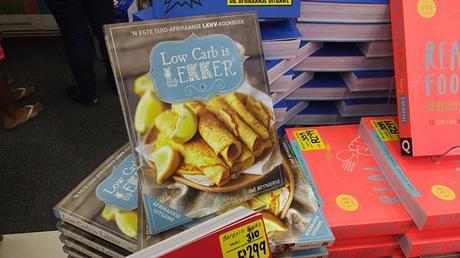
Howzit? Slang greeting from “how’s it” that I’ve turned heads by using without thinking, because it’s the same in familiar-to-me Hawaiian pidgin. The fact that Hawaii’s “howzit brah” (bro, brother) lines right up with the SA “howzit, bru” just makes it even funnier.
Yehbo. A Zulu word meaning yes, but used more broadly as a response, a greeting, or just an interjectory filler word. Use as frequent and mixed up as the Afrikaans ‘Ja,’ such as in “Ja, no?” (yes, no?) and the habit of ending sentences in “Ja” or “hey,” kind of like the Canadian “eh.”
Braai. We will no longer barbecue, Siobhan has declared; we will only braai. Considering the fine art that South Africans raise grilling meat towards, I’m OK with that.
Robots. When told to turn left at the robot, that’s referring to a stoplight. And, occasionally, a convenient way to describe tri-color bell peppers. (R30 is about $2, for those who pay attention to such things.)
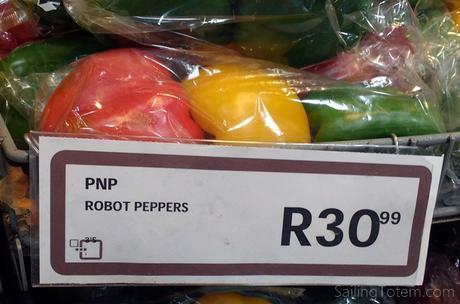
The best of all, but something we aren’t quite equipped to take with us, are the clicking sounds in Zulu, Xhosa, Sotho, and probably a bunch of other languages here we haven’t learned about yet. All clicks are not created equal: they may be made in the back of your mouth, or with a ‘ch’ sound, or more of a lisp, or something else entirely. Interesting and challenging; and especially, mesmerizingly beautiful to listen to.
Food
We had an introduction to South African food from friends in Malaysia, and the SA-owned butcher on Langkawi. As our friend Oskar will tell you, this is the land of meat. I don’t think we’ve ever had such a carnivorous diet!
Biltong is the early favorite. It’s dried chips of meat (could be beef…could be kudu, ostrich, nyala, etc.), or the similar drywors, a dried sausage. Comparing them to our beef jerky will only offend a South African, so I’ll just say they’re…related. We have learned from experience that a bag of biltong It is an excellent road trip companion.
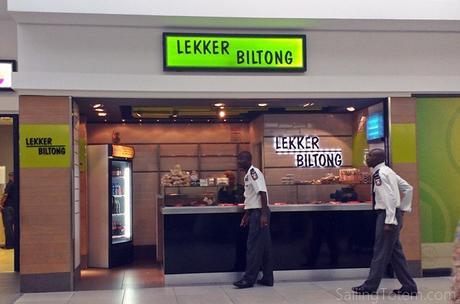
Boerewors is sausage that’s usually beef, but can be pork or lamb or a combination. It’s one big long spiral instead of multiple segments, and often has spices we usually associate with sweeter dishes: nutmeg, cloves, allspice. It seems no braai is complete without a boerewors!
I don’t think I’ve ever had eisbein, a roasted pork knuckle with generous crackling, but it pops up on almost every menu here. It’s an almost shockingly large serving. Jamie and I split one, and had enough leftovers for another meal.
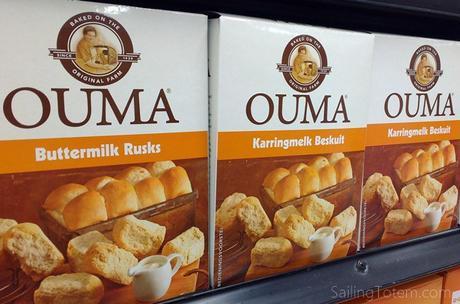
Rusks. We read about Peekay having rusks and coffee for breakfast in The Power of One and couldn’t wait to try them. Sure enough, these dry biscuits are everywhere. They’re good, but not for the faint of tooth!
Cheese with everything! In case your cholesterol isn’t hurting enough already South Africans seem to like to serve cheese with just about everything. How about a side of grated cheddar with that French toast and bacon?
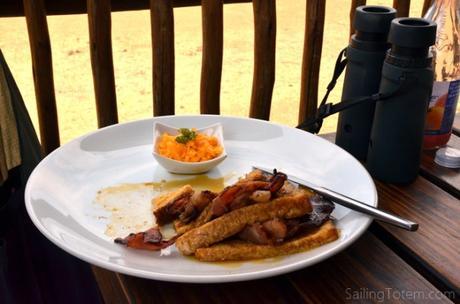
Shoes
We all love to go barefoot, but Siobhan in particular resists wearing shoes whenever possible. In South Africa, she fits right in. It seems to be the Afrikaans kids in particular, but it is TOTALLY NORMAL to see barefoot kids in malls, or grocery stores, or just walking down the street. Shoes are highly optional, especially for anyone under the age of about 15.
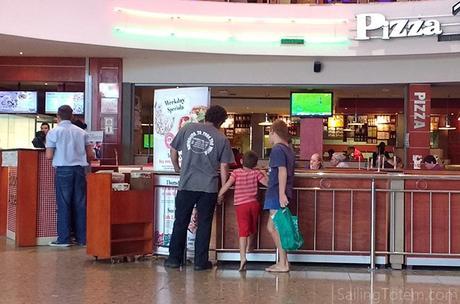
This post is syndicated on Sailfeed.

